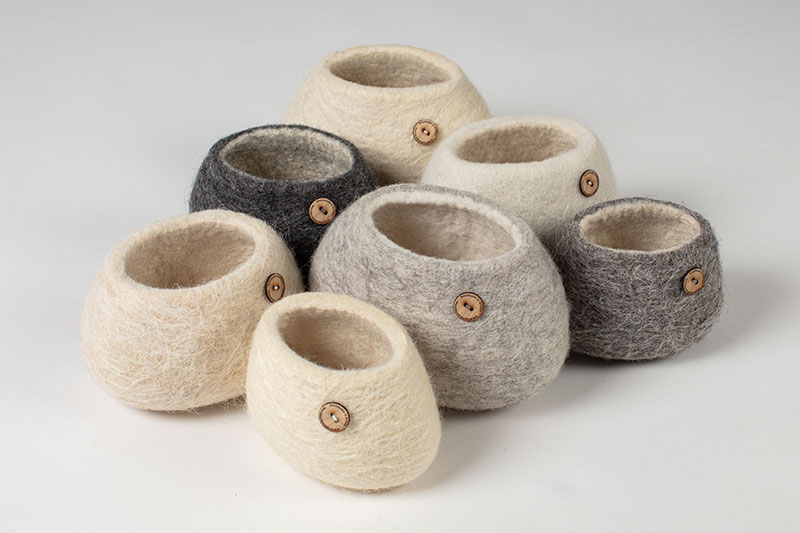WHY BRITISH WOOL?
We have a huge variety of sheep breeds in Britain offering an exciting array of natural colours and textures all of which can be felted.
British Breed Bowls & The Story of British Sheep & Wool
Sheep have been farmed in the UK since pre-Roman times. Over the centuries breeding focused initially on wool production and then on meat production. The wide variety in climate across the UK also means there are breeds well adapted for challenging upland conditions and others bred for higher productivity in lush lowland pastures. Today there are around 60 different pure breeds of sheep in the UK. Whilst a relatively small number are used commercially, the rich genetic diversity is recognised and organisations such as the Rare Breed Survival Trust support enthusiasts who keep flocks of the more unusual breeds.



The wool from these different breeds varies widely and this is promoted by the British Wool Marketing Board and The Campaign for Wool. Upland breeds tend to produce a courser fibre used for carpets, whilst lowland breeds produce fine fibres used for knitting and weaving cloth. And of course, everything in between.
When used for felting, the wool fibres from different breeds behave very differently, meaning it is possible to create interesting patterns and textures. Most fibres shrink when felted but a few actually grow. This means two products made with the same template can be very different sizes. It is a fascinating journey.
Rachel Morley’s range of British Breed Bowls explore the differing qualities of felt created using fibres from different breeds. Rachel seeks out enthusiasts keeping flocks of rare breeds and is aware that buying their wool for this range can help to provide an income for these growers, whilst also promoting the work they are doing to ensure survival for these rare breeds.
Of course, wool is a natural and sustainable product. If left outdoors, it will biodegrade with no harm to the environment. It seems highly appropriate to be utilising such a fabulous renewable resource to create her unique sculptural Art vessels and forms. Rachel’s journey with British Wool continues!



